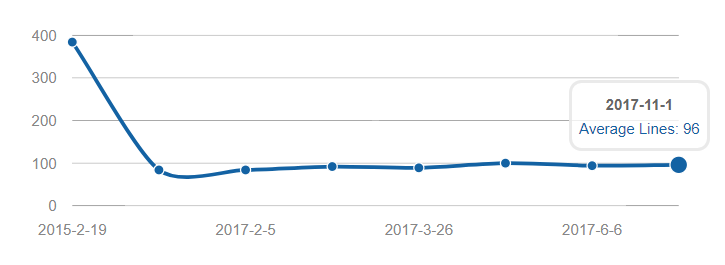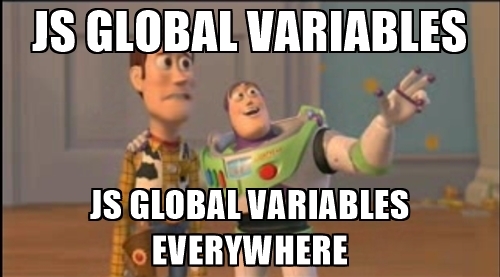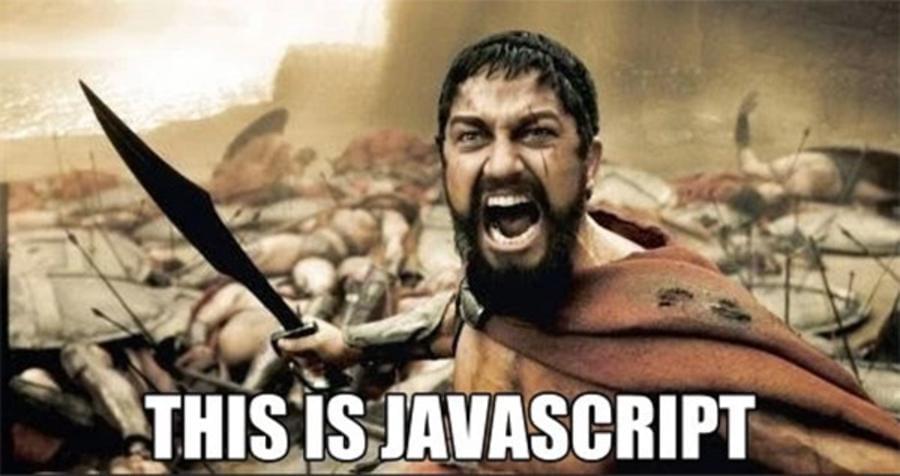 The release 0.2.2 of GPF-JS delivers a polymorphic modularization mechanism that mimics RequireJS and CommonJS
implementation of NodeJS. It was surprisingly easy to make it happen on all supported hosts now that the library
offers the basic services. This API combines lots of technologies, here are the implementation details.
The release 0.2.2 of GPF-JS delivers a polymorphic modularization mechanism that mimics RequireJS and CommonJS
implementation of NodeJS. It was surprisingly easy to make it happen on all supported hosts now that the library
offers the basic services. This API combines lots of technologies, here are the implementation details.
Introduction
The GPF-JS release 0.2.2 is finally out and it contains several improvements:
- Better code quality
- Better documentation
- Some tests were rewritten
Actually, the GPF-JS is already in version 0.2.3 and it introduces stream piping. But this article took me a very long time to finalize!
But the exciting part of it is the new gpf.require namespace that exposes a modularization helper.
To give a bit of context, the article will start by explaining how modularity helps developers create better code. Then, a rapid overview of some existing modularization solutions will be covered. Finally, the implementation as well as the future of gpf.require will be explored.
Modularity
One file to rule them all
One File to bring them all and in the darkness bind them
In the Land of Mordor where the Shadows lie.
To demonstrate the value of modularity, we will start with an extreme edge case: an application which source code stands in one single file and a development team composed of several developers. We will assume that they all work simultaneously and a version control system is used to store the file.
(Each developer works on a local copy of the source file and pushes to the file control system)
The first obvious concern is the resulting file size. Depending on the application complexity, and assuming no library is used, the source file will be big.
And with size comes additional problems, leading to maintainability issues. Even if guidelines are well established between the team members and comments are used, it will be hard to navigate through the lines of code.
JavaScript offer hoisting that basically allows the developer to use a function before it is being declared.
catName("Chloe");
function catName(name) {
console.log("My cat's name is " + name);
}
// The result of the code above is: "My cat's name is Chloe"
But most linters will raise an error for the above code. Indeed, it is a best practice to declare functions and variables before using them.
So, the team will end up cluttering the source file to ensure declarations are made before use.
Not being able to navigate easily in the code also generates a subtler problem: some logic might be repeated because it was hard to locate.
Finally, having all developers work on a single file will generate conflicts when pushing it to the version control system. Fortunately, most of those systems have mechanism to solve the conflicts either automatically or with the help of the developer. But this takes developer time and it is not risk free.
Obviously, all these problems may appear on smaller files too but, in general, the larger the file the more problems.
Two questions are remaining:
- What could be the advantages of having a single source file?
- What is the maximum file size?
In the context of web applications, a single source file makes the application load faster as it reduces the number of requests. It does not mean that it must be written manually, there are many tools capable of building it.
For instance:
- UglifyJS is a command line tool that concatenates and minifies sources. It also exists as a grunt task.
- Webpack goes even beyond JavaScript concatenation by handling resources and transpiling ES6 code.
Answering the second question is way more difficult. From my experience, any JavaScript source file bigger than 1000 lines is a problem. There might be good reasons to have a such a big file but it always comes with a cost.
In GPF-JS, the average number of lines per source file is a little under 100. But it has not always been like this!
Divide and rule
Code splitting is a good illustration of the divide and rule principle. Indeed, by slicing the application into smaller chunks, the developers have a better control over the changes.
(Each developer works on separate - smaller - source files)
It sounds easy but it is not.
When it comes to deciding how to slice the application and organize the sources, there must be rules and discipline.
For example, maximizing the level of granularity by having one function per source will generate an overwhelming number of files. Also, not having a clear file structure will make the architecture obscure and will slow down the team.
Files organization
There are many guidelines and how-to on the web depending on the type of project or technology.
For instance:
- Best practices for Express app structure
- AngularJS Best Practices: Directory Structure
- SAPUI5 application project structuring
- Introduction to ExtJS Application Architecture
- How to Structure Your React Project
On the other hands, some tools offer the possibility to instantiate new projects with a predefined structure. Such as Yeoman which contains thousands of project generators.
Yet, once the basic structure is in place, developers are still confronted with choices when new files must be created.
So, regarding files organization, here are some basic principles (in no particular order):
- Document the structure and make it known: ask people to Read The Fabulous Manual
- Folder names are used to qualify the files they contain. Indeed, if a folder is named "controller", it is more than expected to find only controllers in it. The same way, for a web application, a "public" folder usually indicates that its content is exposed
- The folder qualification can be technical ("sources", "tests", "public") or functional ("controllers", "views", "dialogs", "stream") but mixing at the same level should be avoided. For one technology stack, if dialogs are implemented with controllers: it makes sense to see "dialogs" below "controllers" but having both in the same folder will be confusing
- Try to stick to widely accepted (and understood) names: use "public" instead "www", use "dist" or "release" instead of "shipping"...
- Try to avoid names that are too generic: "folder" (true story), "misc", "util", "helpers", "data"...
- Stick to one language (don't mix French and English)
- Select and stick to a naming formalism, such as Camel Case
... and 640K is enough for everyone :-)
Level of granularity
Once the structure is clearly defined, the only difficulty remaining is to figure out what to put inside the files. Obviously, their names must be self-explanatory about purpose and content.
Struggling to choose the right file name is usually a good sign that it contains more than necessary: splitting mayhelp.
In case of doubts, just associate:
- folders to namespaces
- files to classes
Then, try to stick to the SOLID principles
In particular, the Single Responsibility principle should drive the choices when creating a new file.
Here is a shamelessly modified copy of the Wikipedia definition as it summarizes the idea: "The single responsibility principle is a computer programming principle that states that every module should have responsibility over a single part of the functionality provided by the software, and that responsibility should be entirely encapsulated by the module. All its services should be narrowly aligned with that responsibility."
Referring to the Liskov substitution principle and the Dependency inversion principle may look weird when considering source files but the following sections (in particular interface and mocking) will shed some light on the analysis behind this statement.
Basically, because of this definition, a source file is no more a senseless bunch of lines of codes but rather a self-contained feature. Hence, it will be referred as a module.
Modules
The advantages of modules are multiple:
- Testability: it is sometimes difficult to draw the line between unit testing and integration testing. Long story short, if several modules are needed to run a test, it sounds like integration. On the other hand, if the module can be tested with no or very few dependencies (maybe through mocking), this is unit testing. So, ideally, a module can be easily isolated to achieve unit testing
- Maintainability: on top of the testability, the file size should be relatively small. Both facts greatly increase the module's maintainability. This means that it is easier (in terms of complexity and effort) to improve or fix the module.
- Reusability: no finger pointing here. Every developer starts his career by learning the 'virtues' of copy & paste. It takes time and experience to realize that code duplication is evil. Modules are an indisputable alternative to copy & paste because they are designed to be reusable.
Loading
The way modules are loaded varies for each host and some examples will be shown in the 'Existing implementations' section. This is where GPF-JS brings value by offering one uniform solution for all supported hosts.
The purpose of this part is not to explain each mechanism but rather describe the overall philosophy when it comes to loading the sources of an application.
Everything at once
As already mentioned before, there are tools designed to concatenate and minify all sources to generate a single application file. The resulting file is consequently self-sufficient and can be easily loaded.
Dependencies will be addressed later but, to generate this file, the tool must know the list of files to concatenate (or, usually, the folder where to find the files).
An alternative to load the application is to maintain a list of sources to load... in the correct order so that dependencies are loaded before their dependent modules.
As a result, in an HTML page, a big list of script tags is required to include all sources.
For example, let consider the following modules: A, B, C, D, E and F
- A requires B and C to be loaded
- B requires D to be loaded
- E requires F to be loaded
- F can be loaded separately
The resulting ordered lists can be:
- D, B, C, A, F, E
- C, D, F, B, A, E
- F, D, C, B, A, E
- F, E, D, B, C, A
- ...
Advantages are:
- Sequence being managed by a list, it gives a clear understanding of the loading process and allows the developers to fully control it
- Unlike the unique concatenated file that is regenerated for each release, some files might not even change between versions. Consequently, the loading process can benefit from caching mechanism and the application starts faster.
Disadvantages are:
- Every time a new source is created, it must be added to the list in the correct order to be loaded
- The more files, the bigger the list (and the more complex to maintain)
- When the list becomes too big, one may lose track of which files are really required. In the worst situation, some may be loaded even if they are not used anymore
- Any change in dependencies implies a re-ordering of the list
This is not the preferred solution but this is how the source version of GPF-JS is handled. The lazy me has created some tools to maintain this list in the dashboard.
Lazy loading
Instead of loading all the files at once, another method consists in loading what is needed to boot the application and then load additional files when required. This is known as lazy loading.
For each part of the loading process, the list of files to load must be maintained. Hence the benefits are mostly focused on the time needed to start the application.
Back to the previous example, E and F are big files requiring lot of time to load and evaluate.
- Loading the application is done with the booting list: D, B, C, A
- And, when required, the feature implemented by E is loaded with: F, E
Advantages are:
- Faster startup of the application, it also implies smaller initial application footprint
- Loading instructions are split into smaller lists which are consequently easier to maintain
Disadvantages are:
- Once the application started, accessing a part that has not been previously loaded will generate delay
- If any trouble occurs during the additional loading phase (such as no network) the application breaks
Dependency management
Whether the application is based on static or lazy loading, both mechanism require lists of files to load. However, maintaining these lists is time consuming and error prone.
Is there any way to get rid of these lists?
It's almost impossible to get rid of the lists but changing the scope simplifies their management. Instead of maintaining global lists of files to load, each module can declare which subsequent modules it depends on. This way, when loading modules, the loader must check dependencies and process them recursively.
Hence, the whole application can be started by loading one module which depends on everything else. Also, it means that, on top of implementing a feature, a module contains information about the way it should be loaded.
Back to the previous example:
- A contains information that B and C must be loaded
- B contains information that D must be loaded
- E contains information that F must be loaded Then:
- Loading the application is done by loading A
- And, when required, the feature implemented by E is loaded with E
Advantages are:
- No big lists to maintain, each module declare its dependencies separately
- Better visibility on module dependencies
- Simplified reusability of modules
- New files are loaded if declared as dependencies
- Only required files are loaded
Disadvantages are:
- Loading a module is more complex: dependencies must be extracted and resolved recursively
- Having such a fine level of granularity increases the risk of tangled dependencies and, in the worst case, deadlocks. For instance, three modules: A, B and C. If A depends on B, B depends on C and C depends on A, it is impossible to load any of them.
- If one module is a common dependency to several other modules, it should be loaded only once. If not, the loading performances will be decreased because of multiple loading of the same module
Obviously, for the last part, the loading mechanism must handle some kind of caching.
Interface
Assuming modules have information about their dependencies, how do they access the features being exposed?
Global variables
There are many mechanism but the simplest one is to alter the global scope to export functions and variables.
Indeed, in a flat module, declaring functions and variables is enough to make them available globally in the application.
// No dependencies
var ANY_CONSTANT = "value";
function myExportedFunction () {
/* ...implementation... */
}
To be precise, this depends on the host and how the module is loaded. Let's stay simple for now.
The main advantage is simplicity.
However, problems occur as soon as the complexity of the module grows.
In fact, the module may also declare functions and variables that are used internally and those implementation details should not be exposed. With the above mechanism, it is almost impossible to guarantee that they won't be accessedor, worst, altered) and, consequently, it creates tight coupling with the rest of the application.
This means that it gives less flexibility when it comes to maintaining the module.
One easy workaround consists in encapsulating these implementation details inside a private scope using an Immediately Invoked Function Expression.
// No dependencies
var ANY_CONSTANT = "value",
myExportedFunction;
// IIFE
(function () {
"use strict";
// Begin of private scope
// Any functions or variables declared here are 'private'
// Reveal function
myExportedFunction = function () {
/* ...implementation... */
}
// End of private scope
}());
Another aspect that should be considered when dealing with global symbols is name collisions. This can be quickly addressed with namespaces but here comes a challenging example.
Module interface
Do. Or do not. There is no try.
Let's consider an application capable of loading and saving documents. Developers were smart enough to isolate the serialization part inside a module which exposes two methods: save and load. The application grows in functionality and, for some reasons, saving and loading evolve to a new format. Still, for backward compatibility reasons, the application should be able to load older documents.
At that point, there are several possibilities:
- Changing the code to support both formats in one function is not an option: for the sake of maintainability, there must be a wrapper function to detect the format and then switch to the proper implementation.
- Rename the save and load methods to include a version number (for instance: saveV1, loadV1, saveV2 and loadV2). Then the code (production and test) must be modified to use the proper method depending on the format that needs to be serialized.
- Create a namespace for each version and have the methods being set inside the proper namespace: app.io.v1.save, app.io.v1.load, app.io.v2.save and app.io.v2.load. Again, the code must be adapted but provided the namespace can be a parameter (thanks to JavaScript where namespaces are objects), this reduces the cost.
- Define an interface and have one module per version that exposes this interface. It's almost like with namespacing but accessing the proper object does not depend on global naming but rather on loading the right module.
For instance: var currentVersion = 2,
io = loadModule("app/io/v" + currentVersion);
// io exposes save and load methods
function save (fileName) {
// Always save with the lastest version
return io.save(fileName);
}
function load (fileName) {
var version = detect(fileName);
if (version !== currentVersion) {
return loadModule("app/io/v" + version).load(fileName);
}
return io.load(fileName);
}
The impact of the next version is limited to changing the name of the module. Remember lazy loading? This is an example where the oldest versions are loaded only when needed (reducing the application footprint on startup).
So, ideally, on top of providing dependency information, the module also exposes a known interface. It defines the expectations regarding the methods and variables that will be available and simplifies its integration and reusability.
Module loader
To summarize what has been presented so far:
- An application is composed of modules, they are smaller parts encapsulating single functionalities
- To simplify the loading of the application, modules declares their list of dependencies
- Loading the module gives access to a given set of API a.k.a. interface
Consequently, the ultimate module loader is capable of extracting and resolving dependencies. Then it uses dependency injection to give access to the interfaces exposed by its dependencies.
Mocking
Another subtle benefit of modularity is related to unit testing.
Coming back to the example of module B requiring module D to be loaded: what if module D can't be loaded or used in a test environment? This module might require critical resources. For instance, it could access a database and alter its content: nobody wants the tests to mess with real data.
Does this mean that module B can't be tested because module D is not testable?
Well, if module D is exposing a well-defined interface and if the modularization system offers a way to substitute a module by another one, it is possible to create a fake module that exposes the same interface but mocking the functionalities.
Existing implementations
Browser includes
The simplest way to include a JavaScript source in an HTML page is to add a script tag.
Even though loading is asynchronous, and unless the attributes async or defer are specified, scripts are evaluated in the same order as they are declared in the page.
By default, the scope of evaluation is global. Consequently, any variable declaration is globally available as if it was a member of the window object.
As explained before, it is possible to create a private scope using an IIFE. Exposing the module interface can be done through assigning new members to the window object or using this in the IIFE.
Here is a small variation to make the exported API more explicit:
(function (exports) {
"use strict";
// Begin of private scope
// Any functions or variables declared here are 'private'
// Reveal function
exports.myExportedFunction = function () {
/* ...implementation... */
}
// End of private scope
}(this));
In this context, declaring or loading dependencies inside a module becomes quite complex. Indeed, it is possible to generate script tags using JavaScript (or use AJAX requests) but the code must wait for the subsequent script to be loaded.
RequireJS
The RequireJS library was originally created for browsers but also works with other hosts (Rhino).
By offering a unique mechanism to load and inject modules, this helper solves all the problems of modularization. The factory function generates a private scope and receives the injected dependencies as parameters.
define(["dependency"], function (dependency) {
"use strict";
// Begin of private scope
// Any functions or variables declared here are 'private'
// Reveal function
return {
myExportedFunction: function () {
/* ...implementation... */
}
};
// End of private scope
});
The article "Understanding RequireJS for Effective JavaScript Module Loading" covers all the steps to start with the library.
NodeJs
NodeJS offers a modularization helper initially inspired from CommonJS.
Loading a module is as easy as calling the require function: loading is synchronous. The same way, the module can load its dependencies using require.
Modules have a private scope. If the global scope must be altered (which is not recommended), the global symbol is available.But the normal way to expose the module API is to assign members to the module.exports object (the shortcut exports can also be used).
A typical module would look like:
"use strict";
// Begin of private scope
// Any functions or variables declared here are 'private'
var dependency = require("dependency");
// Reveal function
module.exports = {
myExportedFunction = function () {
/* ...implementation... */
}
};
// End of private scope
Actually, there are two types of modules.
NPM modules
The NPM repository stores a huge collection of modules which can be downloaded and updated using the NPM command line (installed with NodeJS). These modules are usually defined as project dependencies through the package.json file or they can be globally installed.
When loading these modules, they are referenced by an absolute name.
For instance, the GPF-JS NPM module, once installed, can be loaded with: var gpf = require("gpf-js");
You can experiment it yourself.
Local modules
On the other hand, the project may contain its own set of modules: they don't need to be published to be located. To load a local module, the path to the source file must be provided, it is relative to the current module.
var CONST = require("./const.js");
PhantomJS
PhantomJS proposes a similar approach to NodeJS when it comes to loading modules: a require function. However, it is a custom and limited implementation. See the following question thread for details.
Furthermore, this host is a hybrid between a command line and a browser. Hence, for most of the needs, it might be simpler to consider the browser approach.
Bundlers
A JavaScript bundler is a tool designed to concatenate an application composed of modules (and resources) into a single self-sufficient and easy-to-load file.
The good parts are:
- it enforces code reuse by enabling modularization when developing
- it speeds up the application loading by limiting the number of files
- by relying on the dependence tree, it also trims files which are never loaded
The bad parts are:
- The generated code is usually obfuscated, debugging might be complicated
Some bundlers are capable of generating the source map information. This helps a lot when debugging but the source code must be exposed.
- The application file must be generated before running the application. Depending on the number of files it might take some time
The lack of humility before vanilla JavaScript that's being displayed here, uh... staggers me.
Browserify
Browserify is a bundler understanding the NodeJS require syntax and capable of collecting all JavaScript dependencies to generate one single file loadable in a browser (hence the name).
WebPack
WebPack is like browserify on steroids as it does more than just collecting and packing JavaScript dependencies. It is also capable of embedding resource files such as images, sounds...
The bubu-timer project is based on WebPack.
Transpilers
Most transpilers are also bundlers:
- Babel which understands ES6
- CoffeeScript, a sort of intermediate language compiled into JavaScript
- Typescript, which can be extremely summarized by a JavaScript superset with type checking
If one plan to use one or the other, the following articles might help:
Windows Scripting File
Microsoft's cscript and wscript command lines offer a simple and a bit obsolete but yet interesting scripting host enabling the use of ActiveX objects.
I plan to document some valuable examples coming from past experiences demonstrating how one can send an outlook meeting request or extract host information using Windows Management Instrumentation
It can run any JavaScript file (extension .js) provided the system is properly configured or by setting the engine with the engine selector option /E. In GPF-JS, wscript testing is configured that way.
Manual loading
This host does not provide any standardized modularization helper for JavaScript files. One common workaround consists in loading and evaluating a file with the help of the FileSystem object and eval (which is evil):
var fso = new ActiveXObject("Scripting.FileSystemObject"),
srcFile = OpenTextFile("dependency.js",1),
srcContent = srcFile.ReadAll();
srcFile.Close();
eval(srcContent);
Which can be put in a function or summarized in one ugly line: eval((new ActiveXObject("Scripting.FileSystemObject")).OpenTextFile("dependency.js",1).ReadAll());
With this pattern, loading is synchronous and scope is global (because of eval).
Windows Scripting File
Microsoft designed the Windows Scripting File format that allows:
- Language mixing, for instance VBA with JavaScript (but we are only interested by JavaScript, aren't we?)
- References to component or external files
This is illustrated in Loading GPF Library tutorial.
Rhino
Almost like Microsoft's scripting hosts, Rhino (Java's JavaScript host) does not provide any modularization helper. However, the shell offers the load method which loads and evaluates JavaScript files. In that context too, loading is synchronous and scope is global.
Javascript's native import
There is no way this article could talk about JavaScript modularization without mentioning the latest EcmaScript's import feature.
Static import
When the name of the imported module is static (i.e. a string), the mechanism is called static import. It is synchronous and the developer decides what is imported. It also means that the module exposes an interface from a private scope.
For instance: import { myExportedFunction } from "dependency";
When the file dependency.js contains: "use strict";
// Begin of private scope
// Any functions or variables declared here are 'private'
// Reveal function
export function myExportedFunction () {
/* ...implementation... */
}
// End of private scope
On one hand, static import is fully supported by NodeJS, transpilers and bundlers. Regarding browsers, native implementation are on their way.
On the other hand, Rhino and WScript do not support it. PhantomJS may support it in version 2.5.
Dynamic import
When the name of the imported module is built from variables or function calls, the mechanism is called dynamic import. As the name of the module to import is known at execution time, this generates some interesting challenges for the hosts and tools.
There are several proposals for implementation:
And it has recently become a reality in Chrome and Safari.
GPF-JS Implementation
API
The new namespace gpf.require exposes a modularization helper which entry point is gpf.require.define.
The main characteristics are:
- It is working the same way on all hosts
- Loading is asynchronous
- Module scope is private (because of the pattern leveraging factory functions)
- API exposure is done by returning an object
But the API also offers:
- caching of loaded modules
- cache manipulation to simplify testing by injecting mocked dependencies
- synchronization through a Promise resolved when all dependencies are loaded and the module is evaluated (or rejected if any issue occurred)
- lazy loading as it may be called anytime
- resource types, dependent files may be JSON files or JavaScript modules
When writing a JavaScript module, several syntaxes are supported:
- The 'GPF' way:
gpf.require.define({
name1: "dependency1.js",
name2: "dependency2.json",
// ...
nameN: "dependencyN.js"
}, function (require) {
"use strict";
// Private scope
require.name1.api1();
// Implementation
// Interface
return {
api1: function (/*...*/) {
/*...*/
},
// ...
apiN: function (/*...*/) {
/*...*/
}
};
});
- Using AMD format:
define([
"dependency1.js",
"dependency2.json",
/*...*/,
"dependencyN.js"
], function (name1, name2, /*...*/ nameN) {
"use strict";
// Private scope
name1.api1();
// Implementation
// Interface
return {
api1: function (/*...*/) {
/*...*/
},
// ...
apiN: function (/*...*/) {
/*...*/
}
};
});
- Using CommonJS format:
"use strict";
// Private scope
var name1 = require("dependency1.js"),
name2 = require("dependency2.json"),
// ...
nameN = require("dependencyN.js");
name1.api1();
// Implementation
// Interface
module.exports = {
api1: function (/*...*/) {
/*...*/
},
// ...
apiN: function (/*...*/) {
/*...*/
}
};
For this last format, the module names must be static and modules are always evaluated (reasons below).
Support of these formats was implemented for two reasons: it was an interesting challenge to handle all of them but it also offers interoperability between hosts. Indeed, some NodeJS modules are simple enough to be reused in Rhino, WScript or browsers without additional cost.
Implementation details
The implementation is composed of several files:
- src/require.js: it contains the namespace declaration, the main entry points as well as the cache handling
- src/require/load.js: it manages resource loading
- src/require/json.js: it handles JSON resources
- src/require/javascript.js: it handles JavaScript resources
- src/require/wrap.js: it contains a special mechanism that was required to synchronize loading of subsequent JavaScript modules (will be detailed later)
But instead of going through each file one by one, the algorithm will be explained with examples.
A simple example
Let consider the following pair of files (in the same folder):
- sample1.js
gpf.require.define({
dep1: "dependency1.json"
}, function (require) {
alert(dep1.value);
});
- dependency1.json
{
"value": "Hello World!"
}
During the library startup, the gpf.require.define method is allocated using an internal function.
Indeed, the three main entry point (define, resolve and configure) are internally bound to an hidden context object storing the current configuration.
When calling gpf.require.define, the implementation starts by enumerating the dependencies and it builds an array of promises. Each promise will eventually be resolved to the corresponding resource's content:
- The exposed API for a JavaScript module
- The JavaScript object for a JSON file
Hence, this function:
- Resolves each dependency absolute path. This is done by simply concatenating the resource name with the contextual base.
- Gets or associates a promise with the resource. Using the absolute resource path as a key, it checks if the resource's promise is already in the cache. If not, the resource is loaded. This will be detailed later.
In the above example, the array will contain only one promise corresponding to the resource "dependency1.json".
Once all promises are resolved, if the second parameter of gpf.require.define is a function (also called factory function), it is executed with a dictionary indexing all dependencies by their name.
AMD format passes all dependencies as separate parameters. As a consequence, the factory function often bypass the maximum number of parameters that is specified in the linter. A dictionary has two advantages: it needs only one parameter and the API remains open for future additional parameters.
Loading resources
Whatever its type, loading a resource always starts by reading the file content. To make it host independent, the implementation switches between:
- gpf.http.request's internal implementation when the host is a browser
- an internal method which reads any file content for other hosts (implementations: NodeJS, PhantomJS, Rhino, WScript)
Then, based on the resource extension, a content processor is triggered. It is reponsible of converting the textual content into a result that will resolve the resource promise.
For the above example, the JSON file is parsed and the promise is resolved to the resulting object.
Note how error processing is simplified by having this code encapsulated in promises.
Subsequent dependencies
Now let consider the following files (sharing the same base folder):
- sample2.js
gpf.require.define({
dep2: "sub/dependency2.js"
}, function (require) {
alert(dep2.value);
});
- sub/dependency2.js
gpf.require.define({
dep2: "dependency2.json"
}, function (require) {
return {
value: dep2.value;
};
});
- sub/dependency2.json
{
"value": "Hello World!"
}
When writing this article, I realized that 'simple' JavaScript modules exposing APIs (i.e. CommonJS syntax with no require but module.exports) are not properly handled. An incident was created in the next release.
This last example illustrates several challenges:
- JavaScript modules loading
- Relative path management
- Subsequent dependencies must be loaded before resolving the promise associated to the module
Let consider the first point: how does the API loads JavaScript modules?
As explained previously, the resource extension is used to determine which content processor is applied. In that case, the JavaScript processor is selected and executed.
To distinguish which syntax is being used in the module, the v0.2.2 algorithm looks for the CommonJS' require keyword. Indeed, CommonJS modules are synchronous and, because of that, the dependencies must be preloaded before evaluating the module.
Back to the previous comment, this distinction might not be necessary anymore, the code will probably evolve in a future version. That's why no additional explanation will be given in this article.
In the above example, no require keyword can be found, hence the generic JavaScript processor applies.
Before evaluating the loaded JavaScript module, the content is wrapped in a new function taking two parameters:
function (gpf, define) {
gpf.require.define({
dep2: "dependency2.json"
}, function (require) {
return {
value: dep2.value;
};
});
}
This mechanism has several advantages:
- The process of creating this function compiles the JavaScript content. This won't detect runtime errors, such as the use of unknown symbols, but it validates the syntax.
- The function wrapping pattern generates a private scope in which the code will be evaluated. Hence, variable and function declarations remain local to the module. Indeed, unlike eval which can alter the global context, the function evaluation has a limited footprint.
It is still possible to declare global symbols by accessing the global context (such as the window object for browsers) but a simple way to avoid this is to redefine the window symbol as a parameter of the function and pass an empty object when executing it.
- It allows the definition (or override) and injection of 'global' symbols.
In our case, two of them are being defined:
- define is an encapsulation of the gpf.require.define API adapted to the AMD syntax
- gpf is a modified clone of the gpf namespace where the require member is re-allocated.
This last point is important to solve the two remaining questions:
- How does the library handles relative path?
- How does it know when the subsequent dependencies are loaded?
Everything is done inside the last uncovered source file.
A so-called wrapper is created to:
- Change the settings of the require API by taking into account the current path of the resource being loaded
- Capture the result promise of gpf.require.define if used.
As a consequence, the API can return a promise that is either immediately resolved or the one corresponding to the inner gpf.require.define use, ensuring the module is properly loaded.
Future of gpf.require
I would not pretend that the implementation is perfect but, from an API standpoint, it opens the door for interesting evolutions.
Custom resource processor
Right now, only json and js files are being handled. Everything else is considered text resources (i.e. the loaded content is returned without any additional processing).
Offering the possibility to map an extension to a custom resource processor (such as yml or jsx) would add significant value to the library.
Handling cross references
What happens when resources are inter-dependent? It should never be the case but, when building the modules, the developer may fall in the trap of cross references.
For instance, module A depends on module B, B depends on C, C depends on D and D depends on A!
There are easy patterns to work around this situation but, at least, the library must detect and deliver the proper information to the developer to help him solve the issue.
Also, the concept of weak references could be implemented: these are dependencies that are resolved later than the module itself.
For example (and this is just an idea), the dependency is flagged with weak=true. This means that it is not required to execute the factory function. To know when the dependency is available (and access it), the member is no more the resource result but rather a promise resolved to the resource result once it has been loaded and processed.
gpf.require.define({
dependency: {
path: "dependency.js",
weak: true
}
}, function (require) {
return {
exposedApi: function () {
return require.dependency.then(function (resolvedDependency) {
return resolvedDependency.api();
};
}
}
});
Module object
NodeJS proposes a lot of additional properties on the module symbol. Some of them could be valuable in the library too.
Conclusion
If you have reached this conclusion: congratulations and thank you for your patience!
This article is probably one of the longest I ever wrote on this blog: almost two month of work was required. It clearly delayed the library development but, as usual, it made me realize some weaknesses of the current implementation.
I highly recommend this exercise to anybody who is developing some code: write an article on how it works and why it works that way.
It was important to illustrate how modularization helps building better applications before digging into the API proposition. The same way, because the GPF-JS library is compatible with several host, it was important to highlight existing solutions as they inspired me.
I am looking for feedback so don't hesitate to drop a comment or send me an email. I would be more than happy to discover your thoughts and discuss the implementation.











No comments:
Post a Comment